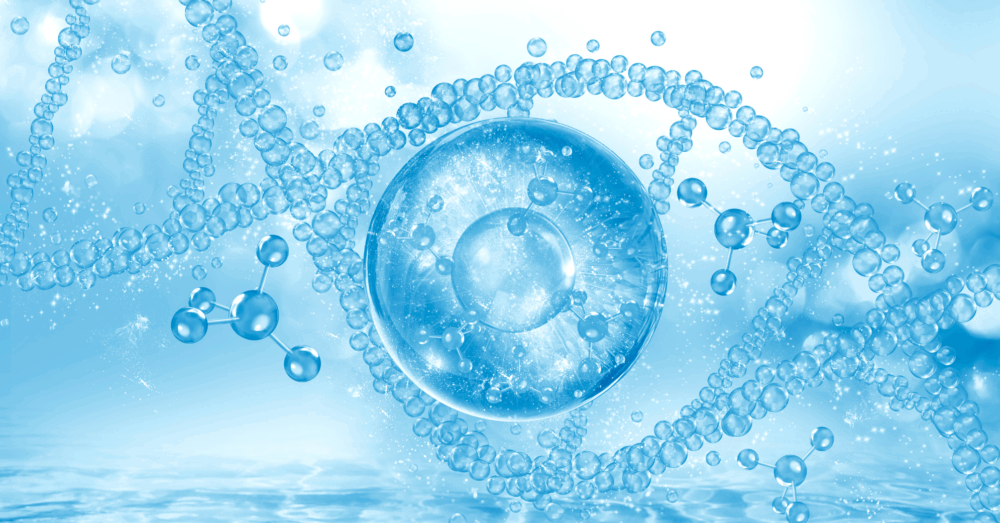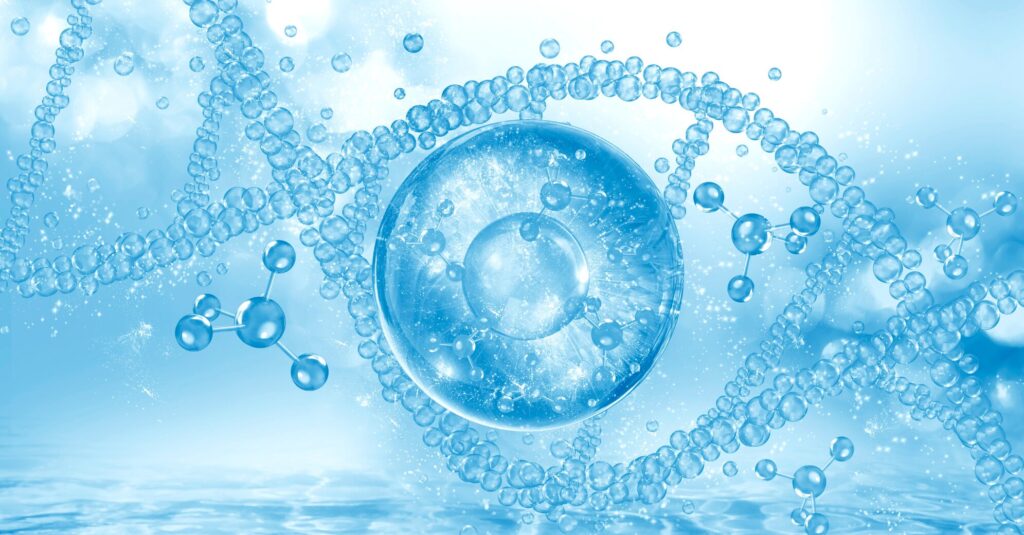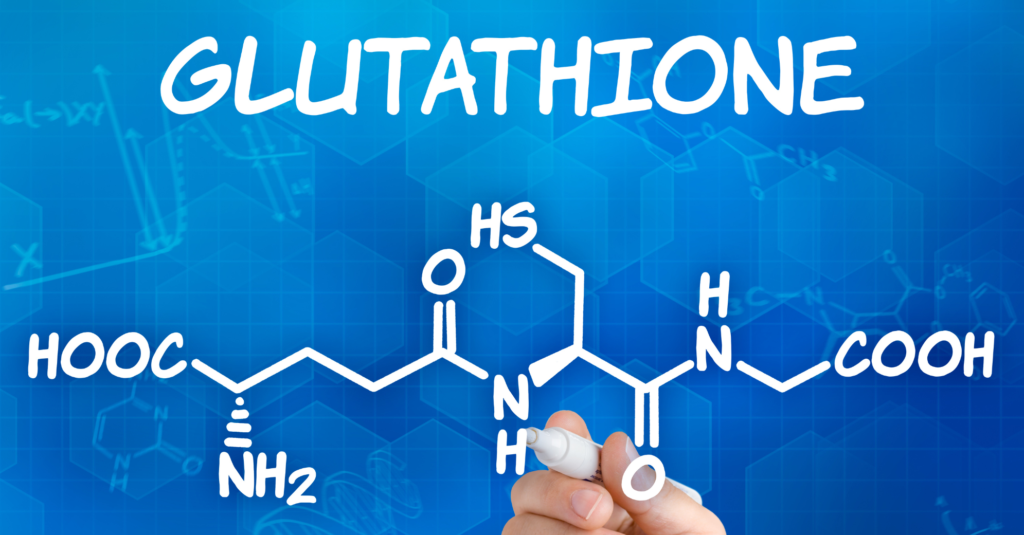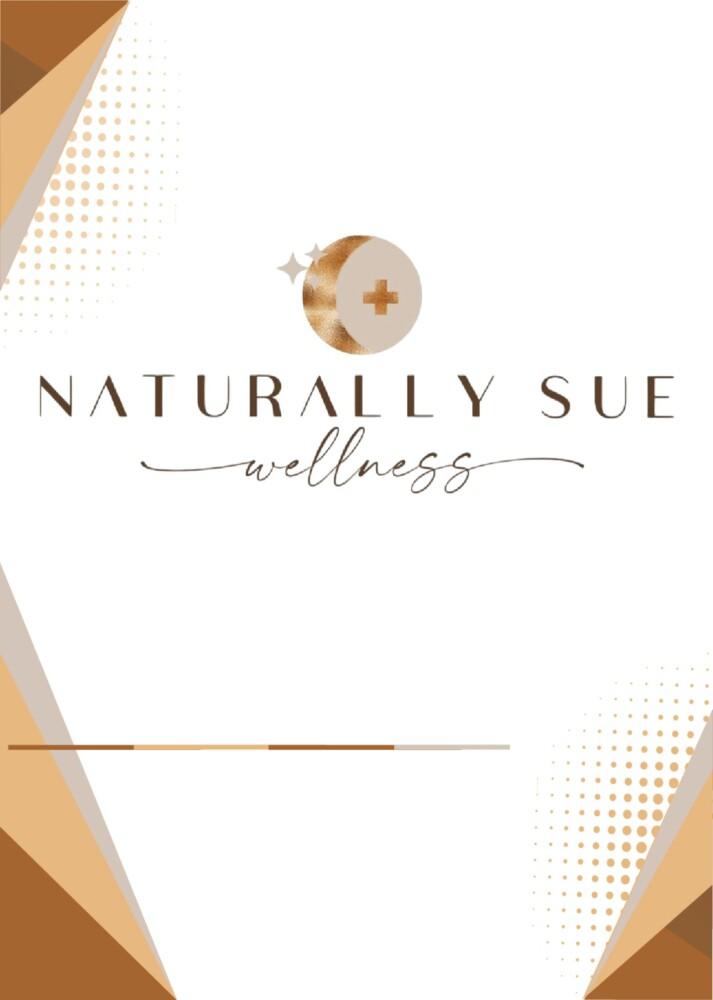The Connection Between Mold Exposure and Detoxification
There is growing concern over mold toxicity and its impact on health. Increasing scientific evidence links prolonged exposure to mold with various debilitating health issues, including respiratory problems, allergic reactions, cancers, and potential neurological effects. This has raised significant concern among the integrative medical community and the public alike.
Mold mycotoxins can accumulate in the body through ingesting mold-contaminated foods, inhalation via poor indoor air quality, and skin exposure.
Fortunately, the body’s most potent antioxidant, Glutathione, can support the body’s detoxification of mold toxins. The body naturally produces glutathione in the liver. It is well-known as the mother of all detoxifiers. You can boost glutathione naturally through foods and supplements to assist the body’s natural detox system.
What Is Glutathione?
Glutathione, also known as γ-L-glutamyl-L-cysteinylglycine (GSH), is a powerful antioxidant naturally produced in the body. It is a tripeptide that’s found in most living cells, including plants and animals. It’s a major antioxidant in cells and is involved in many cellular processes. Glutathione is made up of three amino acids:
- Cysteine
- Glutamic acid
- Glycine
Glutathione is known as the “master detoxifier” and is the body’s most important and powerful antioxidant. It plays a crucial role in eliminating xenobiotic compounds (foreign chemical substances) from the body, such as:
- Mold toxins
- Heavy metals
- Pesticides
- Environmental toxins
- Medications, like acetaminophen
Functions of glutathione in detoxification include:
- Neutralization of free radicals and toxins
- Support of liver detoxification
- Help with the recycling of other antioxidants, like vitamin C and E
The enzymes in glutathione are involved in many biological processes, including cell protection and metabolic regulation.
- Glutathione transferases (GSTs) help protect cells from oxidative stress and toxic molecules
- Glutathione peroxidase reduces organic hydroperoxides
- Glutathione reductase reduces oxidized glutathione back to its active form
If glutathione is deficient, the body cannot properly eliminate toxins. Glutathione has been shown to have the following liver-supporting benefits when it comes to mold detox:
- Reduces oxidative stress
- Maintains redox balance (balance between oxidants and antioxidants, reducing cellular damage)
- Enhances phase 2 detoxification
- Regulates the immune system
How Does the Body Make Glutathione
The body makes glutathione in the liver from the amino acids cysteine, glutamate, and glycine.
There are 2 steps in the synthesis of glutathione:
- The enzyme glutamate-cysteine ligase (CGL) combines with glutamate and cysteine to form γ-glutamylcysteine.
- Glutathione synthetase adds glycine to the C-terminal of γ-glutamylcysteine to form glutathione.
Glutathione can also be recycled. The body can increase glutathione by recycling it through a process called the “glutathione redox cycle”. During this process, oxidized glutathione is converted back to its reduced form by the enzyme glutathione reductase and nicotinamide adenine dinucleotide phosphate (NADPH). This process is known as the Gamma-glutamyl cycle.
Proper methylation function is vital for optimal glutathione production. Methylation is considered a key process in the synthesis of glutathione because part of the methylation cycle directly contributes to the production of cysteine, an essential amino acid needed to build glutathione molecules.
How Mold Toxins Impact the Body’s Detox Systems
Mold toxins affect the body’s natural detox pathways, such as the liver, kidneys, and digestive system. Mycotoxins impair detox capacity by overwhelming the liver and significantly depleting the liver’s glutathione stores, a crucial component of the body’s detoxification system.
When the body is exposed to mycotoxins, it uses up large amounts of glutathione to try and neutralize and eliminate them, leading to a rapid depletion of glutathione levels. Deficient glutathione stores cause the liver to be less efficient at processing and eliminating toxins, potentially causing a buildup of harmful substances in the body and potentially leading to various health issues, like cancer, liver disease, kidney disease, and neurological disease.
Chronic exposure to mold and mold toxins can lead to oxidative stress, inflammation, and immune suppression. Symptoms of an impaired detoxification system include:
- Brain fog
- Fatigue
- Joint pain
- Muscle fatigue
- Digestive issues, like bloating, gas, constipation, or diarrhea
- Mood changes
- Chemical sensitivities
- Food sensitivities
- Allergies
- Skin issues
Impairment of glutathione function can also lead to premature aging and potential health issues, including:
- Neurodegenerative diseases
- Parkinson’s disease
- Alzheimer’s disease
- Cancer prevention
- Cardiovascular health
Ensuring the body has adequate glutathione and detox support can help overcome mold toxicity and prevent serious health issues.
The Role of Glutathione in Detoxing Mold from the Body
Glutathione plays a crucial role in detoxifying mold from the body. The antioxidant supports the body’s detox pathways by neutralizing toxins, breaking down toxins, repairing cell damage, and enhancing immune function.
Detoxification occurs in two phases. Glutathione is involved in both of those phases. The steps below illustrate glutathione’s role in the detoxification process:
Step 1: Neutralizing Mycotoxins
Mycotoxins are fat-soluble and are easily absorbed through the intestinal lining, airways, and skin and stored in the body this way. For them to be excreted from the body, they must be converted from fat-soluble to water-soluble. Glutathione neutralizes toxins by converting them into water-soluble compounds, making them less harmful and easily excreted through urine and bile. This process is called glutathione conjugation.
Step 2: Supporting Liver Function
Glutathione plays a critical role in Phase II liver detoxification, breaking down mold toxins and acting as a binder. Glutathione attaches to the now water-soluble toxic compounds to be expelled through bile or urine.
Step 3: Reducing Oxidative Stress
During the initial phase of detoxification, the liver produces enzymes to cause toxins to create free radicals. Free radicals can cause cell damage if they aren’t cleaned up. Glutathione’s high antioxidant levels help prevent cell damage caused by free radicals during this phase.
Glutathione helps repair cellular damage caused by inflammation and free radicals in the following ways:
- Reduces oxidative stress and protects cell mitochondria by eliminating free radicals
- Helps control inflammation by either stimulating or reducing the body’s immune response, depending on what it needs
- Repairs damage caused by inflammation
Step 4: Boosting Immune Function
Glutathione enhances the immune system’s response to combat fungal and bacterial infections linked to mold exposure. Research shows that the antioxidant properties of glutathione help neutralize oxidative stress caused by mold toxins, thereby supporting the function of immune cells like macrophages and neutrophils in fighting off toxins and pathogens. This function is impaired when glutathione levels are low.
Natural Ways to Boost Glutathione Levels
Practical solutions to naturally ensure glutathione homeostasis include eating a diet high in glutathione and supportive key nutrients, as well as incorporating lifestyle practices that protect glutathione levels.
Dietary Sources of Glutathione and Precursors
Incorporating foods high in sulfur and antioxidants is naturally supportive to the body’s detox pathways and can help boost glutathione levels. Sulfur-rich foods contain organic compounds known as “thiols”. Thiols contain a sulfhydryl group (-SH), which is a sulfur atom bonded to a hydrogen atom. They are also known as mercaptans. It is what makes high-sulfur foods “stinky”.
Foods high in sulfur include:
- Garlic
- Onions
- Cruciferous vegetables (broccoli, kale, Brussels sprouts, cauliflower, cabbage)
High-antioxidant foods include:
- Low glycemic fruits, like berries, pomegranates, acai
- Citrus fruits like lemons, limes, and oranges
- Avocados
- Dark leafy greens, like spinach, collard greens
- Carrots
- Sweet potatoes
- Herbs and spices, like turmeric, ginger, oregano, thyme, clove, cinnamon, rosemary
- Herbal teas, like green tea and matcha
Key Nutrients that Support Glutathione Production
Glutathione production can be enhanced by getting several other key nutrients, including:
- Vitamin C and E help recycle and regenerate glutathione
- Selenium is required for glutathione synthesis. It also helps scavenge free radicals
- NAC (N-acetyl cysteine) is a precursor to glutathione that supports its production
- Curcumin, found in turmeric, can increase glutathione levels
Lifestyle Practices to Protect Glutathione Levels
Healthy lifestyle practices will support the body’s natural production of glutathione, such as:
- Minimize toxin exposure (air purifiers, detoxifying houseplants)
- Incorporate infrared saunas for detoxification
- Manage stress to prevent oxidative depletion
- Regular exercise helps with circulation and sweating, two important aspects of your body’s natural ability to detox
- Quality sleep helps reduce oxidative stress and supports natural antioxidant production
Avoiding processed and inflammatory foods, smoking, and excessive alcohol consumption also helps preserve glutathione stores and protects immune function.
Glutathione Supplements for Mold Detox: Pros and Cons
If you are dealing with mold toxicity, it may be necessary to supplement with glutathione to keep your body from becoming deficient. Supplementing may be even more important for those with compromised immunity. However, certain forms of the supplement may not be absorbed well, so it’s important to find a bioavailable form.
The best, most effective forms of glutathione supplements include:
- Liposomal Glutathione is known for its best absorption rate. It can get into your bloodstream to tackle mycotoxins immediately.
- S-Acetyl Glutathione is stable and easily absorbed by the body
- IV Glutathione Therapy offers rapid delivery for severe cases. Unlike a pill form that has to go through the digestive system, IV therapy goes straight into the bloodstream to get to work.
- N-acetylcysteine (NAC) is a precursor to glutathione and can help boost glutathione levels
- S-adenosylmethionine (SAMe) is a compound that helps produce glutathione
Benefits and Risks
Benefits of glutathione supplementation include:
- Fast detox support, especially during acute mold exposure
- Replenishment of glutathione levels, since mold toxicity often depletes the body of the antioxidant
- Reduced toxic burden
- Helps repair damaged cells
- Enhances immune function
- Boosts energy production
As with any supplement, there may be benefits and potential side effects. Potential risks and side effects:
- Nausea
- Gastrointestinal discomfort
- Allergic reactions
Side effects of supplementation are usually mild and tend to subside as the body adjusts to the supplement. These reactions can be worse when glutathione is given through IV.
Recommendations
If you are considering starting with a glutathione supplement, it’s recommended that you start with a low dose and work your way up to mitigate any uncomfortable side effects. It’s important to work with a practitioner who can help you determine if you need to supplement, and if so, which types of glutathione supplements would work best for your condition. Our Naturopathic Doctor can personalize a glutathione protocol for you. Book a free consultation here to see if we are the right fit!
Supporting the Body Naturally During Mold Detox
There are many natural ways to support the body and glutathione levels while detoxing from mold toxicity. Good practices include detox support, hydration, gut health, and focus on keeping down inflammation.
Detox Support Practices
- Binders – Binders like activated charcoal and bentonite clay prevent toxins from getting into the bloodstream by acting like magnets, attaching themselves to mycotoxins to be excreted through waste. They can be dangerous if used for too long or incorrectly.
- Sweating therapies – Sweating is one of the body’s pathways for detoxification that can help facilitate the elimination of toxins. You can amplify sweating through the use of saunas, infrared saunas, steam baths, hot yoga, and exercise. Epsom salt baths in your baths can also help draw out toxins from the body.
Hydration and Gut Health
- Increase filtered water intake to help flush out toxins through urine, sweating, and breathing.
- Herbal teas contribute to hydration while also providing other benefits, such as calming, anti-inflammatory, or antioxidant properties, depending on the type of tea.
- Ensure adequate fiber intake to help bind to and eliminate toxins
- Use probiotics, prebiotics, and fermented foods to support gut health and to restore healthy microbes
Anti-Inflammatory Supplements
There are many powerful anti-inflammatories available to naturally support glutathione production and mold detox. Some commonly used anti-inflammatories include:
- Curcumin is a potent anti-inflammatory
- Quercetin is known for its anti-inflammatory and antihistamine properties
- Ginger is an ally against inflammation
- Omega-3 fatty acids reduce inflammation and boost immunity
- Milk thistle is anti-inflammatory, protects the liver, and promotes the regeneration of new cells
- Resveratrol is a potent anti-inflammatory and antioxidant
- Vitamin D is an immune regulator, an immune enhancer, and an anti-inflammatory
- Vitamin C is a powerful antioxidant
FAQs About Glutathione and Mold Detox
How does glutathione help with mold detox?
Glutathione is known as the “master detoxifier.” It is naturally produced by the liver. Without it, the body cannot properly eliminate toxins. Research shows that increasing glutathione levels supports the liver during mold detox by:
- Reducing oxidative stress
- Maintaining redox balance
- Enhancing detoxification
- Regulating the immune system function
What foods naturally boost glutathione levels?
Sulfur-rich foods, like cruciferous vegetables, garlic, and onions can help boost glutathione levels naturally. Foods high in antioxidants, such as citrus fruits, berries, avocados, and leafy greens are also naturally supportive to the body’s detox pathways and can help boost glutathione levels.
Are glutathione supplements safe for daily use?
Glutathione can be safe for daily use, but it depends on the form it’s in. It can also cause side effects, like nausea and bloating at first, so it’s important to start slow.. Some forms of glutathione may not be easily absorbed into the bloodstream, so work with a professional who can personalize supplementation and help determine the right glutathione supplement for you.
How long does it take to detox mold with glutathione?
Results from glutathione for mold detox vary based on individual health and the severity of mold exposure. Some may see improvement in a few weeks, while it may take a few months for others.
Can I use glutathione with other mold detox supplements?
Yes. Supplements like activated charcoal, probiotics, vitamin C, quercetin, and milk thistle can support your body’s natural detox pathways and work synergistically with glutathione to help eliminate mold.
Conclusion: Harnessing Glutathione for Mold Detox and Long-Term Health
Glutathione, the master detoxifier, is the body’s most powerful antioxidant. Without it, the body cannot eliminate harmful substances, like mold toxins. Glutathione is naturally produced by the liver, but when mold toxins are present, its supply can become depleted. Deficient glutathione can compromise liver function and a build-up of harmful toxins, which can cause a variety of potential health complications.
Supplementation has been shown to increase glutathione levels and support the body’s natural detox pathways during mold toxicity. Foods, like cruciferous vegetables, garlic, and onions can also boost glutathione levels for better detoxification.
There are many ways to naturally detox your body from mold. Nutritional supplements, like Vitamin C, omega-3’s, and probiotics can be used to support the work glutathione does to detoxify. Fermented foods, anti-inflammatory, and antioxidant-rich foods assist in detoxification and boost immunity so the body can recover better from mold illness. Lifestyle practices, like sweat therapies, exercise, stress management, and sleep also help support the body’s detoxification efforts.
If you’ve been exposed to mold and are experiencing symptoms of mold toxicity, contact Naturally Sue Wellness for your personalized plan and start healing now.
The doctors at Naturally Sue Wellness are experts in mold detoxification and have helped hundreds of patients successfully recover from mold toxicity. With our guidance, patients experience long-term recovery from toxic mold illness and benefit from our years of experience and recommendations of top-notch mold professionals.
Contact us for your personalized plan and start healing now.









